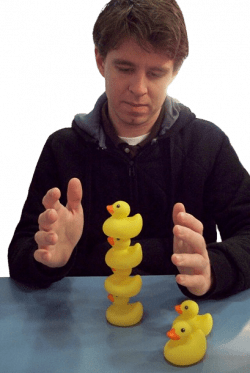Absurd scientific advice for common real-world problems – A book review
Have you ever wondered how to build a lava moat? How about mailing a package from space or predicting the weather by yourself? Ever wondered how to make an emergency landing or charge your phone without a power outlet? Neither have I, but this book, full of highly impractical advice, has all the answers you need.
This very entertaining and useless self-help guide was written by American cartoonist, author, and engineer Randall Munroe and was published in 2019. The blurb was the main reason I was attracted to this book. “For any task you might want to do, there’s a right way, a wrong way, and a way so monumentally bad that no one would ever try it. ‘How To’ is a guide to the third kind of approach.” I was sucked in immediately.
Along with some very comedic cartoons, the book consists of 28 chapters all of which begin with the phrase ‘How to…’. What follows are some hilarious yet astounding facts I came across.
How to Play Tag
Theoretically a game of tag (or ‘it’ if you’re from the south of England), should eventually reach a natural equilibrium. Eventually, the slowest player will become ‘it’, will be unable to tag anyone else, and remain ‘it’ forever.
Randall Munroe suggests that some people are fast over short distances while others can maintain a pace over a long time. Taking Usain Bolt, the world’s fastest short-distance sprinter, and Hicham El Guerrouj, who holds the world record for the mile-long run, Munroe cleverly explains how a game of tag would work between these two athletes.
Usain Bolt would be doomed to be ‘it’ forever and that long-distance runners would have a huge advantage
Randall claims that put up against a long-distance runner, Usain Bolt would crumble. Therefore, in a game of tag against Hicham El Guerrouj, he would at first be able to tag him and sprint away but would end up getting exhausted after about 30 seconds, and allow El Guerrouj to catch up and tag him. So, Munroe concludes that Usain Bolt would be doomed to be ‘it’ forever and that long-distance runners would have a huge advantage over anyone in a game of tag.
How to Catch a Drone
Let’s say you have a garage full of sports equipment. Which sport’s projectiles would work best for hitting a drone? Munroe immediately rules out a baseball for its small size and lack of precision. An arrow would endanger the neighbours, a basketball would be too heavy to throw high, and a boomerang, if missing the target, could fly straight back at you.
Reaching out to Serena Williams, Munroe tested if a tennis pro’s accuracy could knock a drone out of the air. His tentative prediction was that a champion player would have an accuracy ratio around 50 when serving and take 5-7 tries to hit a drone from 40 feet. Serena Williams’ third serve scored a direct hit on one of the propellers and sent the drone crashing to the ground. Munroe’s prediction was in fact wrong.
How to Tell if You’re a ‘50s Kid
Check your teeth, is the advice that Munro gives to this… I’ll explain. After the invention of nuclear weapons in 1945, tests and experiments have shown radioactive debris released by these explosions to spread throughout the atmosphere and potentially cause cancer in humans.
Kids from the ‘50s would still be carrying ever-so-slightly elevated strontium-90 levels
A contaminant released was strontium-90, which our bodies incorporate into our teeth and bones. People who were children in the 1960s absorbed a lot of this strontium. Over time, the levels of strontium fell and was removed from human bodies through natural processes of bone renewal. However, teeth are much more compact and stable than bones, and kids from the ‘50s would still be carrying ever-so-slightly elevated strontium-90 levels to this day.
How to Dispose of This Book
What a way to end the book! If you ever get your hands on a book that’s indestructible because of some kind of Hogwarts Library/Ring of Power/Jumanji situation, where should you put it?
Like radioactive waste, Munroe suggests that we put it somewhere where it won’t bother us. The West Isolation Pilot Plant, an underground waste disposal site 2000 feet below the New Mexico desert, would be a good starting point; these tunnels are dug through an ancient layer of rock salt half a kilometre thick. If you don’t fancy doing this, Munroe also suggests shooting the book directly into the sun.
This book was fun, I thoroughly enjoyed reading it. Munroe’s closing statement was just great: “There’s a giant, weird world out there. Ideas that sound good can have terrible consequences, and ideas that sound ridiculous can turn out to be revolutionary. Sometimes you can figure out which ones work ahead of time, and sometimes you just have to try them and see what happens (but you might want to stand at a safe distance).”

Randall Munroe, Author. Image from Wikimedia Commons

Comments (1)
This is hilarious! What a mind-boggling way of thinking! 🙂